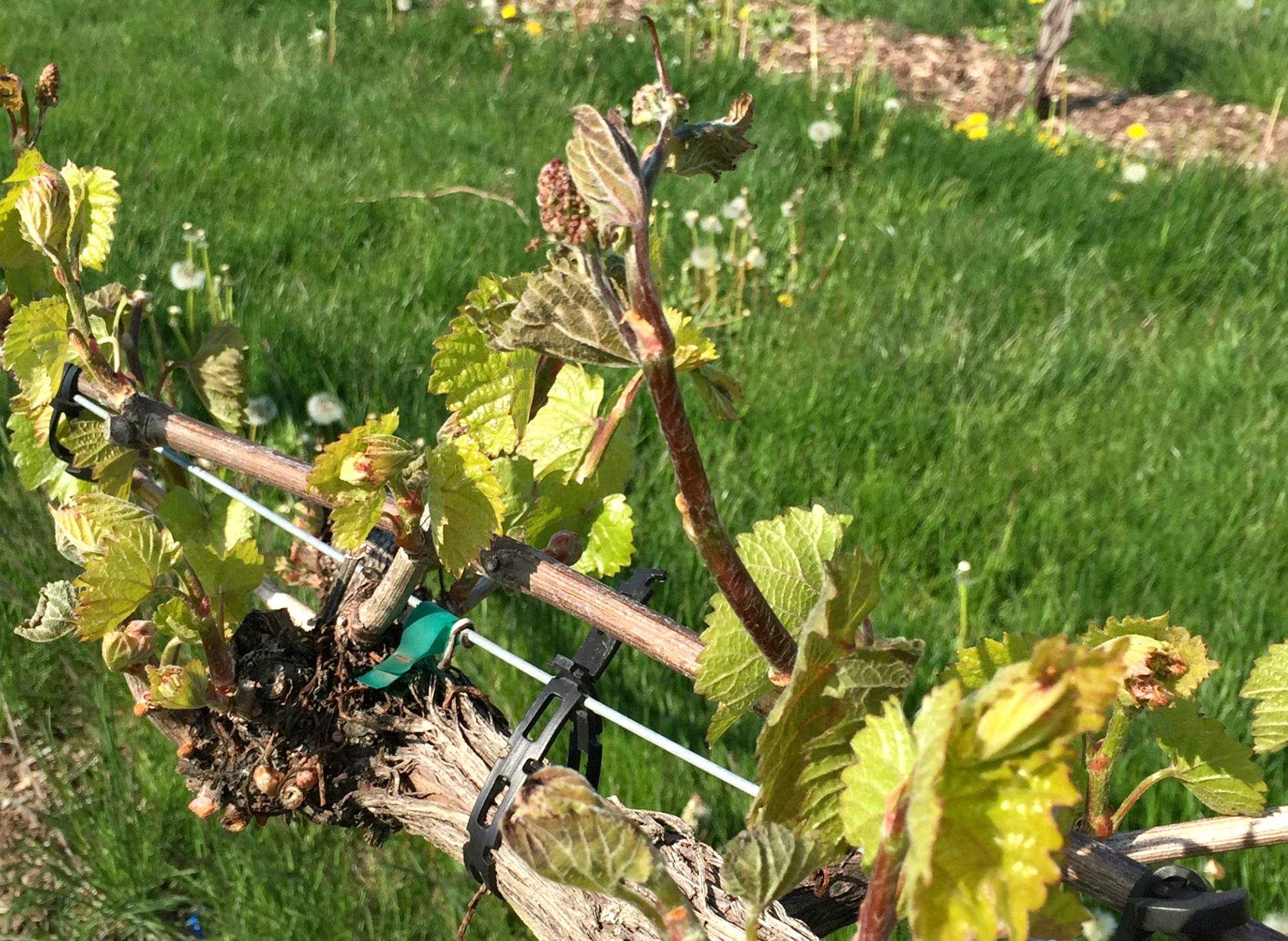
Grape vines at the University of Wisconsin West Madison Agricultural Research Station were damaged by the May 14-15 frosts.

Grape vines at the University of Wisconsin West Madison Agricultural Research Station were damaged by the May 14-15 frosts.
Every year as spring unfolds, fruit growers around Wisconsin start feeling anxious, wondering whether a late frost will harm their crop. Overall, temperatures are warming across the state amidst global climate change, but this pattern is accompanied by unseasonable cold weather events, such as the late spring frost much of the state experienced earlier this month.
Over the last five years, weather events such as the "killer frost" in April 2012 and the "polar vortex" in early 2014 have contributed to significant reductions in fruit production around Wisconsin. In 2012, the U.S. Department of Agriculture provided aid, through its Disaster Assistance Program, to state fruit growers coping with the spring frost. In fact, during this same period, cold damage accounted for 53 percent of the total insurance paid for crop losses to U.S. deciduous fruit growers.
Spring frosts tend to be particularly damaging to fruit production. As buds begin to swell in spring and fruit trees initiate a new season of growth, they lose the ability to tolerate temperatures below freezing. During early spring, at the beginning of the bud swelling process, flower buds can survive temperatures in the low 20s Fahrenheit; however as bloom approaches, those buds can be damaged by temperature in the high 20s.
The most critical stage is full bloom, because flowers are the structures in a plant most sensitive to cold damage — a difference in only 1 degree Fahrenheit in temperature can make the difference between having a fruit crop and losing it. When temperatures drop below the freezing point, ice crystals form in the actively growing plant tissues, rupturing cell membranes and permanently damaging flowers and leaves. Eventually these tissues die and no fruit is produced.
Similarly, fruit in the early stages of growth are also very susceptible to frost damage, and can abort shortly after a spring frost event.
Fruit trees were more susceptible to the May 14-15 frost event in central and southern Wisconsin because flower structures were exposed to freezing temperatures. Apple trees and grape vines in these regions were struck by this cold snap, though the extent of the damage will vary locally. Meanwhile, in northern parts of the state, flower buds were just beginning to break and were better able to withstand the freezing temperatures.The developmental stages of fruit trees during spring can differ significantly between northern and southern regions of Wisconsin. Cooler springs in the northern parts of the state typically delay bud break and subsequent bloom. This lag can have a significant effect on the damage fruit trees might experience in the event of a spring frost.
In addition to differences in damage due to developmental stages between northern and southern Wisconsin, fruit growing regions in the eastern part of the state closer to Lake Michigan can escape some spring frost events. The lake slowly warms through the spring, keeping nearby temperatures cooler and consequently delaying the blossoming of fruit trees. In fact, orchards and vineyard in those areas reported minimal damage from May's frosts.
Although damage reports from fruit growers across the state vary widely from 0 to 95 percent of crop loss, a final figure on the estimated total losses cannot be determined until later in the growing season. Growers affected by the mid-May frost are still working on adjusting their production practices to secure a crop for this season, as well as preparing for next year’s production cycle.
Growing fruit in Wisconsin is a risky business. As climate change increases the frequency of extreme and unseasonable weather events, including spring frosts, the investment and work of several years can be destroyed in a matter of hours.
Amaya Atucha is a fruit crop specialist with the University of Wisconsin-Extension and UW Fruit Program, and an assistant professor in the UW-Madison Department of Horticulture.